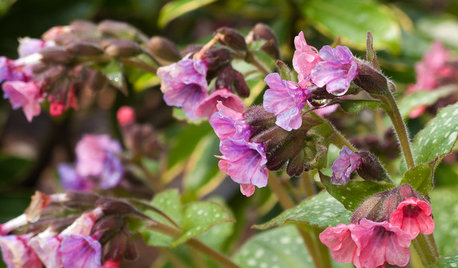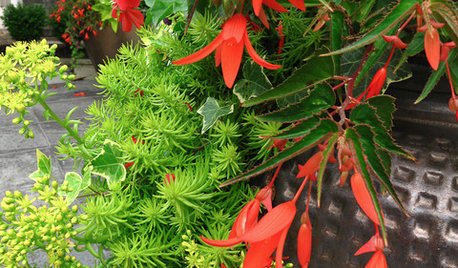Help with raspberry problem- disease or fungus?
roserobin_gw
18 years ago
Related Stories

GARDENING GUIDESTree Care: Common Tree Diseases and What to Do About Them
Learn to recognize trees that may be affected by diseases or pests so you can quickly take action
Full Story
GARDENING GUIDESHow to Keep Your Citrus Trees Well Fed and Healthy
Ripe for some citrus fertilizer know-how? This mini guide will help your lemon, orange and grapefruit trees flourish
Full Story
GARDENING FOR BUTTERFLIESGardening for the Bees, and Why It’s a Good Thing
When you discover how hard bees work for our food supply, you may never garden without them in mind again
Full Story
FRUIT TREESHow to Grow Your Own Juicy Plums
Easier than other stone fruits and with a variety of colors to choose from, plums are a versatile garden addition
Full Story
HEALTHY HOMEWhat You Need to Know About Dust and How to Fight It
Breathe easier with these 10 tips for busting mites, dander and other microscopic undesirables
Full Story
GARDENING GUIDESPacific Northwest Gardener: What to Do in June
Now's the time to prune pines and vines, prevent pests and buy June-blooming plants to keep your garden healthy and beautiful
Full Story
GARDENING GUIDESWhat Kind of Roses Should You Grow?
Want to add the beauty of roses to your garden? Find out which ones, from old-fashioned to modern, are right for you
Full Story
GARDENING FOR BUTTERFLIESGreat Design Plant: Lungwort
Yes, the name is unfortunate. But the flowers and foliage are delightful, and this perennial is easy to grow and shunned by deer
Full Story
GARDENING GUIDESSuperstar Annuals for Containers and Baskets
High performing, low maintenance and all-around gorgeous, these container plants go the distance while you sit back and relax
Full Story
MOST POPULARHow to Get Rid of Those Pesky Summer Fruit Flies
Learn what fruit flies are, how to prevent them and how to get rid of them in your home
Full StoryMore Discussions









hemnancy
gardengal48 (PNW Z8/9)
Related Professionals
Cary Landscape Architects & Landscape Designers · Clemson Landscape Architects & Landscape Designers · Wheeling Landscape Architects & Landscape Designers · Anderson Landscape Contractors · Edmond Landscape Contractors · Maywood Landscape Contractors · Middletown Landscape Contractors · Nutley Landscape Contractors · Pompton Lakes Landscape Contractors · Vancouver Landscape Contractors · Wells Landscape Contractors · Goldenrod Landscape Contractors · Ridgewood Fence Contractors · Shirley Fence Contractors · Summit Fence Contractorsroserobin_gwOriginal Author
larry_gene
roserobin_gwOriginal Author
larry_gene
jean001
hemnancy
larry_gene
Bo Svenson
larry_gene
jean001
midwood
jean001
kbygdnes91
gardengal48 (PNW Z8/9)
kbygdnes91